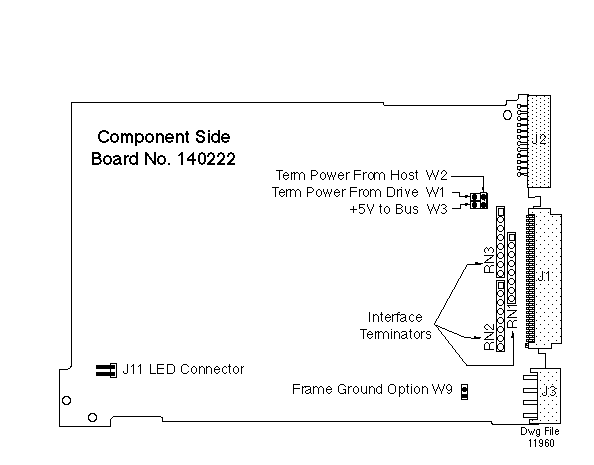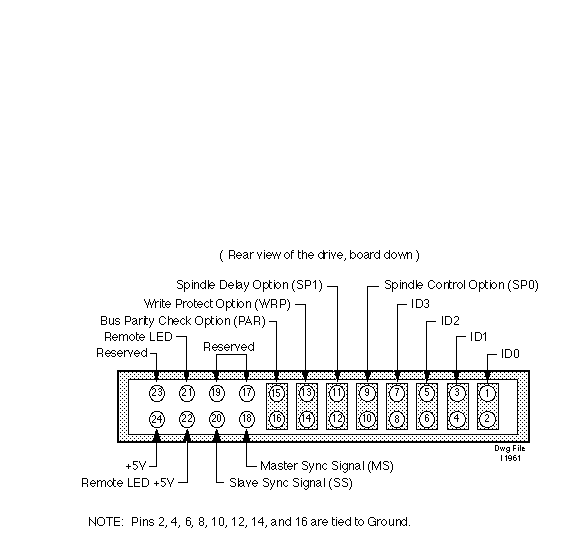Configuration and Jumper Options


- SCSI ID Selection
Up to sixteen devices (the host and fifteen targets) can be attached to the SCSI bus. These are selected with jumpers on Multi-Function Connector J2. In multiple-device systems, each device must have its own Unique SCSI ID. The SCSI ID (drive address) jumpers are identified as ID0, ID1, ID2, and ID3. ID selection is binary, as shown below.
SCSI ID ID3 ID2 ID1 ID0
0 (Default) out out out out 1 out out out in 2 out out in out 3 out out in in 4 out in out out 5 out in out in 6 out in in out 7 out in in in 8 in out out out 9 in out out in 10 in out in out 11 in out in in 12 in in out out 13 in in out in 14 in in in out 15 in in in in
- Interface Termination
If terminators are installed at RN1, RN2, and RN3 (default), the drive provides termination for the SCSI interface. If the terminators are not installed, the drive does not provide interface termination.
SCSI terminators are installed only in the end devices on the SCSI cable; remove the terminators from each of the other devices. The SCSI Host Adapter card and the last drive in the chain should have terminators.
- Terminator Power
W1 and W2 select the source of power (+5V) for the interface terminators; W3 controls the drive supplying +5V to the bus.
- Terminator Power
W1 W2 W3
Y N - Drive provides terminator power. (Default) N Y - Host provides terminator pwr via J1 pin 26 to RN1 and RN2
- - Y Drive supplies +5V to the bus via J1 pin 26. (Default)
- Remote LED
A user-supplied LED may be connected to Remote LED (Pins 21 and 22).
- Spindle Options
Jumpers at SP0 (Pins 9 and 10) and SP1 (Pins 11 and 12) control the spindle options.
- Spindle Options
SP0 SP1
N N The drive starts the spindle motor at power-on. (Default) Y N The drive waits for a Start Unit SCSI command to start the spindle motor. N Y Spindle start-up is delayed based on SCSI ID address (12 seconds per ID)
- Write Protect
A jumper at WRP (Pins 13 and 14) selects the write protect option.
Jumper The drive is write protected. No Jumper The drive is not write protected. (Default)
- Parity
A jumper at PAR (Pins 15 and 16) selects the bus parity check option. The drive always generates parity regardless of this option.
Jumper SCSI interface parity checking disabled. No Jumper SCSI interface parity checking on. (Default)
- Spindle Sync Signals
Use of the MS and SS signals is optional. These signals are used as spindle synchronization reference.